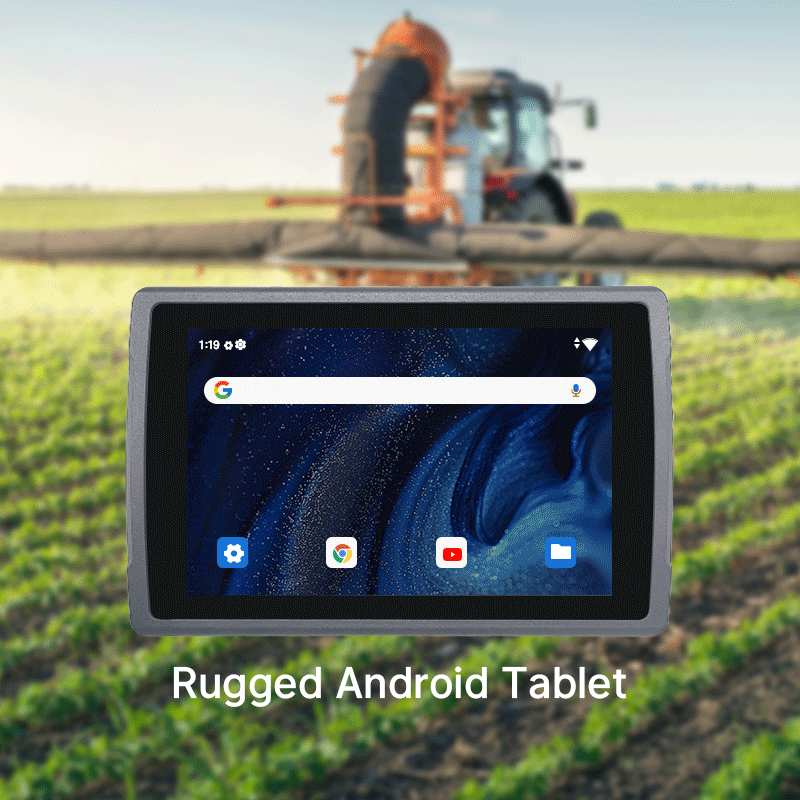10.1-Inch Rugged Linux Tablet PC: The Smart, Secure, and Durable Choice for Industrial Power Users in 2025
Introduction
In high-demand industrial environments—where precision, reliability, and durability are everything—equipment failure is not an option. Enter the 10.1-inch rugged Linux tablet PC: a powerful, customizable, and ultra-durable device engineered to perform under extreme conditions.
Whether you operate in logistics, construction, utilities, or field services, the demand for secure, field-ready computing is rising. More organizations are turning to Linux-based rugged tablets to ensure operational continuity, enhance workforce productivity, and reduce downtime.
In this article, we’ll explore why the 10.1-inch rugged Linux tablet PC is capturing attention in 2025, how it meets industrial needs, and what makes it a smart investment for forward-thinking businesses.
Why the 10.1-Inch Rugged Linux Tablet PC Is Leading in 2025
1. An Ideal Display Size with Maximum Portability
A 10.1-inch screen hits the sweet spot—big enough for detailed views of technical drawings, schematics, or real-time data, yet compact enough for mobile workers. Unlike larger devices that hinder mobility or smaller ones that compromise visibility, 10.1 inches delivers both performance and convenience in a single rugged form factor.
2. Built to Withstand Industrial Realities
From construction sites to oil fields, rugged tablets must thrive in harsh, unpredictable environments. The 10.1-inch Linux tablet is engineered for:
- Shock, vibration, and drop resistance (MIL-STD-810G/H certified)
- Waterproof and dustproof protection (IP65–IP68 ratings)
- Wide temperature range support (-20°C to 60°C)
- Anti-glare, sunlight-readable screens for outdoor use
This isn’t just a tablet—it’s a mission-critical asset designed to perform when everything else fails.
3. Linux OS: Control, Security, and Customization
Linux isn’t just an OS—it’s a strategic advantage. With open-source flexibility, organizations gain:
- Lower total cost of ownership—no expensive licenses
- Increased security—Linux is inherently resistant to viruses and malware
- Custom software options tailored to operational needs
- Faster deployment of updates without waiting for vendor approvals
For IT teams prioritizing data protection and operational independence, Linux is the smarter choice over Windows or Android.

Frequently Asked Questions (FAQs)
Is the 10.1-inch rugged Linux tablet compatible with industrial equipment?
Absolutely. These tablets come equipped with multiple I/O ports (USB, RS232, RJ45, GPIO, HDMI, etc.), allowing seamless integration with machines, sensors, and control systems. Many models also support CAN bus protocols, making them ideal for vehicle and automation systems.
What battery life can I expect?
Most rugged 10.1-inch Linux tablets offer 8 to 12 hours of operation, depending on usage. Advanced models also include hot-swappable batteries, ensuring uninterrupted 24/7 uptime—critical in sectors like emergency services and manufacturing.
Can non-tech-savvy users operate Linux tablets?
Yes. Today’s Linux tablets are user-friendly with intuitive touch interfaces, much like Android or iOS. Companies often customize UIs to align with user workflows, reducing the learning curve and boosting adoption.
How secure are Linux rugged tablets for enterprise use?
Linux offers robust user access controls, encryption capabilities, and minimal vulnerability exposure, making it one of the most secure platforms available today. With customizable firewalls and regular patch updates, it’s ideal for industries with strict cybersecurity policies.
Do Linux rugged tablets support remote device management?
Yes. IT departments can utilize Mobile Device Management (MDM) tools that are compatible with Linux to remotely configure, update, and monitor deployed tablets across different sites, increasing operational efficiency.
Core Features Businesses Can’t Ignore
Advanced Wireless Connectivity
Equipped with 4G LTE, Wi-Fi 6, GPS, and Bluetooth 5.1, these tablets ensure reliable communication—even in remote areas.
Rugged Mounting Options
With VESA and vehicle mount support, you can secure the tablet in trucks, forklifts, or control rooms for stable operation in motion.
Barcode Scanner and NFC Modules
Streamline logistics and inventory tracking with built-in scanning capabilities.
GNSS Support with High Accuracy
Perfect for field operations that require exact positioning, such as surveying or fleet tracking.
Fanless Cooling System
Eliminates dust ingestion while ensuring long-term performance—ideal for dirty or sterile environments.
Use Cases That Prove Its Value
- Smart Warehousing: Replace clipboards with real-time data input and inventory checks.
- Energy and Utilities: Perform maintenance inspections and sync data even in remote wind farms or power stations.
- Emergency Services: Rugged Linux tablets are now used in fire trucks and ambulances for route mapping and incident reporting.
- Agriculture and Forestry: Deploy precision farming tools with full GPS support and integration with IoT sensors.
- Public Transportation: Manage driver logs, GPS routing, and real-time diagnostics for smart fleet management.
Fact: According to ABI Research, rugged mobile device deployments are expected to exceed 10 million units annually by 2026, driven largely by transportation, logistics, and public safety.
Conclusion
If your business relies on rugged mobility, data-driven decisions, and operational efficiency, the 10.1-inch rugged Linux tablet PC is not just a tool—it’s your competitive advantage. With its unmatched durability, secure and flexible OS, and industry-grade integrations, it’s built to thrive where consumer tablets fail.
From saving time in the field to increasing system uptime, this device checks every box for the modern industrial workforce. Don’t just keep up—get ahead with rugged Linux technology.








